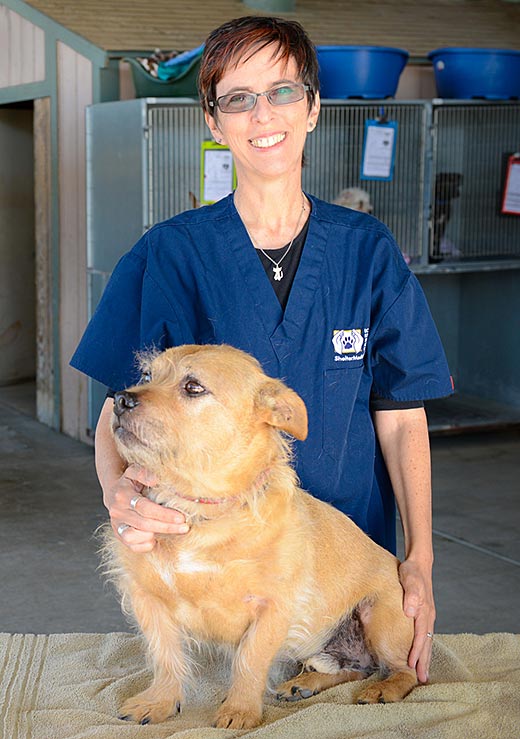
Shelter medicine, a field of veterinary medicine pioneered at UC Davis to focus on both individual and group health of homeless animals, is finally coming into its own.
Once emphasizing only spay and neuter procedures, the specialty has grown to now broadly address the treatment and prevention of health and behavior problems among companion animals cared for in animal shelters.
It was one of two veterinary specialties officially recognized this year by the American Veterinary Medical Association board — thanks in large part to the dedicated efforts ofKate Hurley, associate director for the UC Davis Koret Shelter Medicine Program. She is amazed at how quickly the field of shelter medicine has evolved, from its fragmented and marginalized beginnings to recognition by the American Board of Veterinary Specialties.
“I remember when shelter medicine as a veterinary specialty wasn’t even a twinkle in anyone’s eye,” Hurley said. “ABVS recognition will certainly help advance this growing field.”
Started as an animal control officer
Hurley began her career as an animal control officer, an experience that has guided all her subsequent work with shelters. Shortly after receiving her Doctor of Veterinary Medicine degree from UC Davis in 1999, Hurley was again working at an animal shelter when parvovirus struck. She felt overwhelmed and unprepared.
“I had one veterinarian telling me vaccinating dogs on intake wouldn’t work, and another colleague telling me the test wasn’t reliable, and I had animals with bloody diarrhea and 150 dogs at risk,” she recalled.
“I had to make a decision and it was going to have far-reaching consequences for the animals in my shelter, our reputation in the community, and potentially for pet animal health if I let animals go out of my shelter sick. That’s when I realized we need to think about animal shelters as a whole system, much the same as we think about herd health.”
World’s first residency in shelter medicine
Hurley returned to UC Davis in 2001 to start the world’s first residency in shelter medicine. “I was the first person to undertake a residency in shelter medicine when there was no clear path for what that would mean,” she noted.
That path would eventually lead Hurley to co-chair the committee that would formally petition the American Board of Veterinary Specialties for recognition of shelter medicine as a veterinary specialty.
Most communities are home to at least one animal shelter, which may be a public or private institution, a small sanctuary providing lifetime care, or a large facility that admits thousands of animals annually. Demand for long-term shelter of homeless animals has increased in recent years, putting these populations at greater risk of contracting infectious disease, developing problem behaviors, and suffering compromised welfare in confinement.
Increasing veterinary guidance
The role of veterinary medicine within the animal shelter community has historically been limited to neutering animals and treating the ill. One of the new veterinary specialty’s goals is to increase veterinary guidance within the animal shelter community and provide science-based recommendations that protect the health and welfare of millions of homeless animals.
Training in shelter medicine is now offered at almost every veterinary college in North America along with several postgraduate internships and residencies, while hundreds of hours of continuing education on the subject are presented at veterinary conferences every year.
The Association of Shelter Veterinarians, which began as a grass-roots movement in 2001, today claims more than 1,000 members, including some 700 veterinarians, and has student chapters in 22 veterinary colleges.
Part of this article was adapted from Scott Nolen’s piece in JAVMA News.
